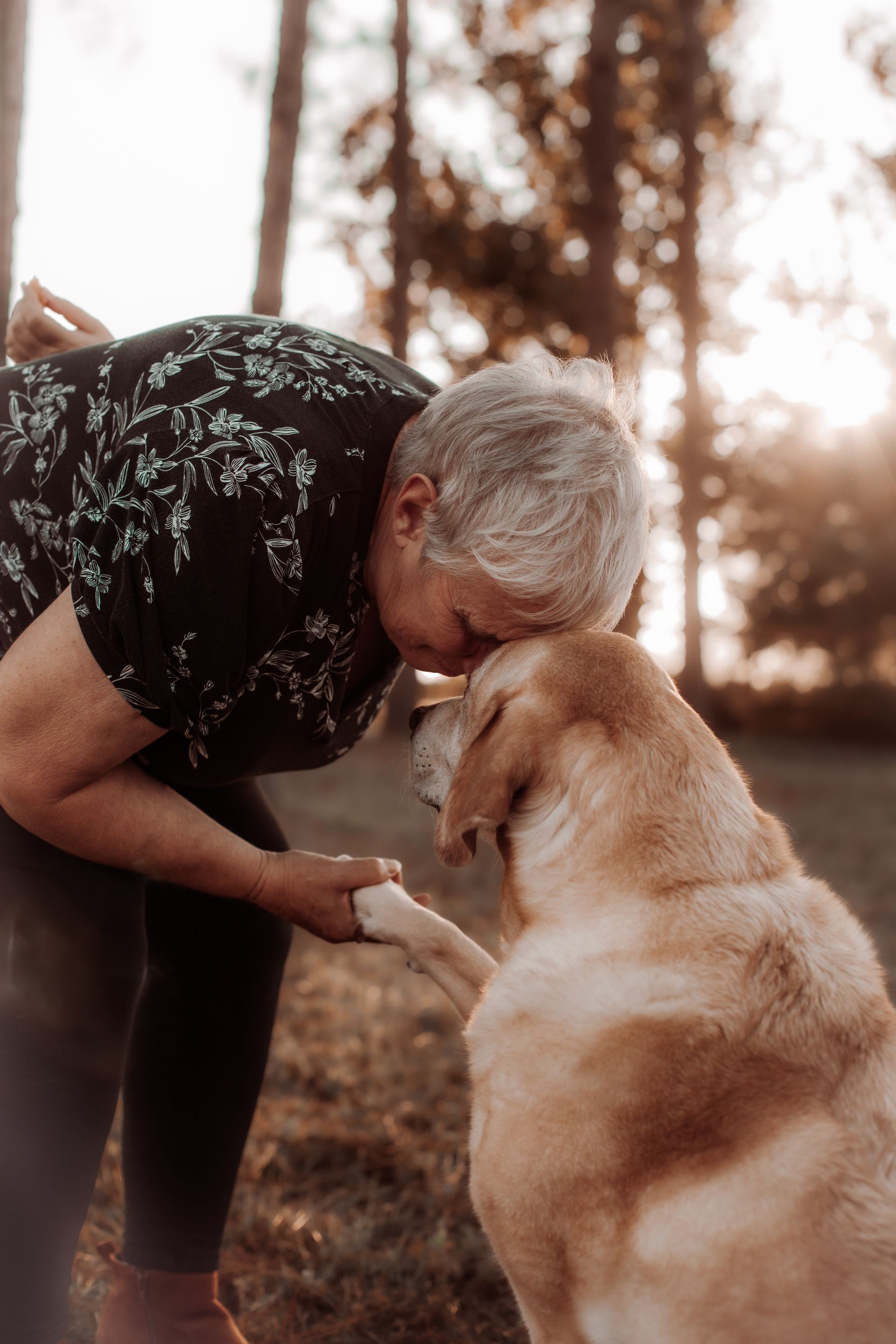Get in touch
555-555-5555
mymail@mailservice.com
DOG TALK.
DOG TALK BLOG

By Heather Szasz
•
17 Dec, 2023
I can't help but be amazed at how our furry friends, especially dogs, have this incredible ability to heal us in ways we never imagined. They have this innate power to bring joy and happiness into our lives, and their presence alone can make a world of difference in our overall well-being. It's as if they have this magical ability to heal our souls and mend our broken hearts. One of the most incredible ways in which our dogs become our healers is through their unwavering companionship. They are always there for us, no matter what, offering a shoulder to lean on, a listening ear, and a comforting presence. They have this uncanny sense of knowing when we need them the most, intuitively sensing our emotions and responding with unconditional love and support. Whether we're feeling stressed, anxious, or simply down, they have this incredible knack for brightening our spirits and making us feel better. Studies have shown that spending time with dogs can have numerous physical and mental health benefits. Playing with our furry friends can release endorphins, the feel-good hormones, which can significantly reduce stress, anxiety, and even help alleviate symptoms of depression. The simple act of petting a dog can lower our blood pressure and heart rate, promoting a sense of calmness and relaxation. They provide us with a sense of purpose and responsibility, encouraging us to stay active and engage in regular exercise, which in turn boosts our overall physical and mental well-being. Moreover, our dogs have this unique ability to teach us important life lessons, often without us even realizing it. They teach us the value of unconditional love, loyalty, and forgiveness. They remind us to live in the present moment and find joy in the simplest of things. They show us the power of resilience and adaptability, as they bounce back from hardships and changes with a wagging tail and a playful spirit. They teach us patience, as they eagerly wait for us to come home or finish our chores, never failing to greet us with boundless excitement and happiness. But perhaps the most remarkable aspect of our dogs being our healers is their ability to provide emotional support and comfort during difficult times. They become our confidants, our therapists, and our silent companions when words fail us. They can sense our pain and grief, offering a comforting presence that goes beyond words. They are there to lend a listening ear and a warm cuddle when we're feeling lonely or overwhelmed. They have this incredible way of making us feel seen, understood, and loved, even in our darkest moments. In a world that sometimes feels chaotic and overwhelming, our dogs bring us back to a place of calmness and serenity. They remind us of the simple joys in life and the importance of slowing down and appreciating the present moment. They heal us through their unwavering love, their infectious happiness, and their ability to bring out the best in us. So, the next time you find yourself feeling down or in need of some healing, look no further than your furry companion. Embrace their love, cherish their presence, and let them work their magic. Our dogs truly are our healers, bringing light, joy, and comfort into our lives in ways that words can hardly describe.

By Heather Szasz
•
30 Nov, 2023
Bringing a dog into your life can be an incredibly rewarding experience. Dogs offer companionship, loyalty, and unconditional love. However, to ensure a harmonious relationship with your furry friend, it's crucial that they listen to your commands. A well-trained dog is not only a joy to be around but also safer and happier. In this blog post, we'll explore some basic tips to help you get your dog to listen to your commands and know when it's time to bring in a professional trainer. 1. Start Early and Be Consistent Training should begin as soon as you bring your new pup home. Dogs are quick learners, and the earlier you start, the better. Consistency is key in dog training. Use the same commands, hand signals, and rewards consistently to avoid confusion. 2. Positive Reinforcement is the Way Dogs respond best to positive reinforcement. Reward good behavior with treats, praise, and affection. When your dog associates obeying your commands with positive outcomes, they're more likely to repeat those behaviors. Avoid using punishment or fear-based training methods, as they can lead to anxiety and aggression. 3. Use Clear and Simple Commands Keep your commands clear, simple, and distinct. Use one-word commands like "sit," "stay," "come," and "heel." Avoid long sentences or complicated phrases that may confuse your dog. 4. Be Patient and Persistent Training a dog takes time and patience. Be persistent and don't get discouraged if your dog doesn't pick up on a command right away. Some dogs may take longer to learn than others, so stay consistent and keep practicing. 5. Practice Regularly Regular training sessions are essential for reinforcing commands and improving obedience. Short, daily sessions work best, focusing on one or two commands at a time. As your dog progresses, you can introduce more commands. 6. Socialize Your Dog Socializing your dog is a vital aspect of training. Exposing your dog to different people, animals, and environments helps them become well-rounded and less anxious. Socialization can also improve their ability to follow commands in various situations. 7. Recognize Signs of Difficulty Sometimes, despite your best efforts, your dog may have difficulty learning certain commands or exhibit problem behaviors. Here are some signs it might be time to bring in a professional trainer: - Aggression: If your dog displays aggressive behavior towards people or other animals, consult a trainer immediately. - Excessive Fear or Anxiety: Dogs that are overly fearful or anxious may require professional help to build confidence and overcome their fears. - Persistent Behavioral Problems: If your dog consistently ignores your commands or exhibits problematic behaviors such as excessive barking, digging, or chewing, a trainer can help address these issues. - Complex Training Needs: For advanced training needs such as agility or specialized tasks, a professional trainer with expertise in those areas is invaluable. Conclusion Training your dog to listen to your commands is an investment in a happy and harmonious relationship between you and your canine companion. Remember to start early, use positive reinforcement, be patient, and practice regularly. If you encounter difficulties or see signs of behavior issues, don't hesitate to seek the help of a professional trainer. With time, effort, and the right guidance, you'll enjoy the rewards of a well-trained, happy, and obedient dog. Happy owner, happy dog!

Office
460 King St. Suite 200
Charleston, SC 29403
© 2024
All Rights Reserved | Happy Owner Happy Dog | Website Designed by CēSuite Digital


